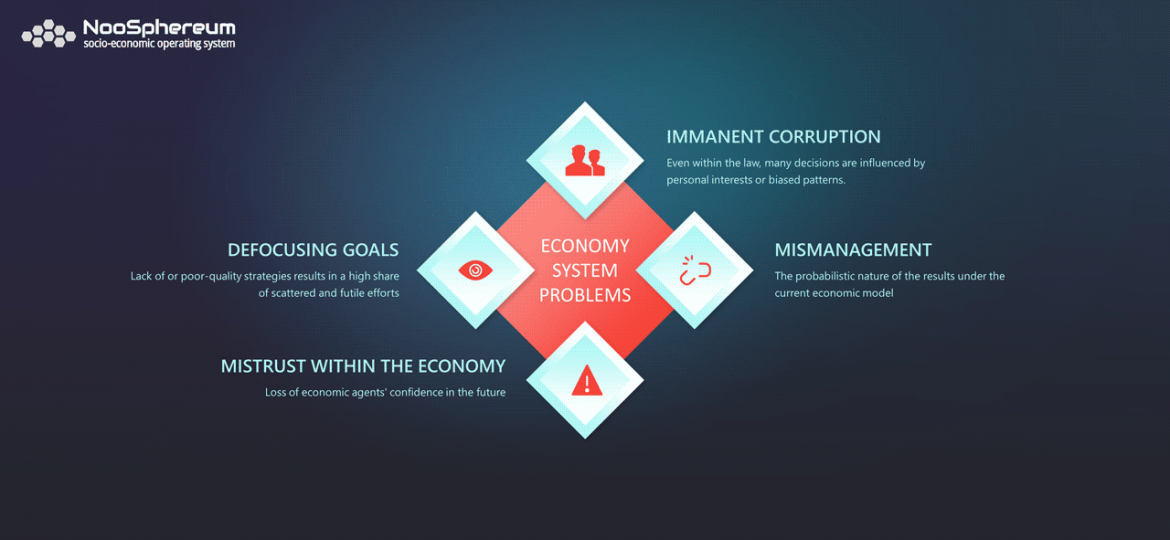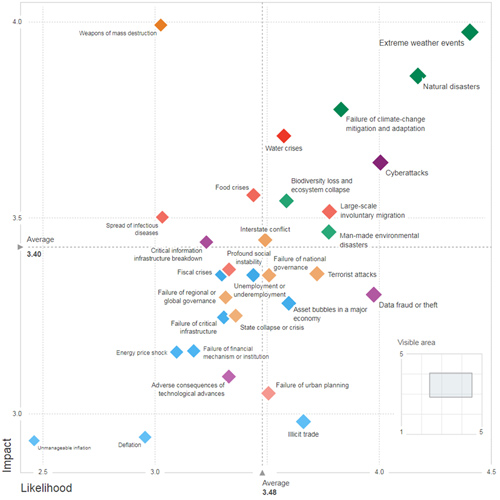
In our previous article, we examined the issues of world economic architecture, which influences the emergence of imbalances and makes balanced development impossible. In today’s column, we will look at several specific imbalances and their inherent risks and find out the reasons for their occurrence.
Why does the global economy today look like a fragmented system of siloed governments, enterprises and individuals?
If we look at the world as a whole, we can see that due to the lack of a single planning infrastructure, many economic entities (enterprises, corporations, countries, entrepreneurs and individuals) are not united in a single economic being. All of them are not working in the synchronous and balanced rhythm of value creation.
That is, they are all dispersed in their ideas about how their industries will develop. They can only guess. Given that, almost every enterprise operates in a half-blind competition on their markets.
In this context, we consider the following as the main problems of the modern economy management system:
- Absence or poor quality of strategies due to non-standardized planning,
- Slow strategic adaptation due to immature of strategic management processes,
- The opacity of planning data for entities outside ecosystems due to competition,
- The high cost of contracting due to distrust and unstable environment.
The lack of transparency in planning degrades the value of plans and strategies at all levels of the economy. The system which can provide a smart contract platform for strategic and mid-term plans integrated to the actual resource deployment all over the world will change the game. It could give unlimited opportunities for enterprises and individuals and provide a tool to control and govern the whole global economy in a synchronous way.
Without direct, smart end-to-end connectivity between all the levels of the economy (from a government to any enterprise or individual), we are not able to respond to essential economic circumstances. All the most vital things in decision making, all new projects, trends, threats, geographical and economic imbalances will be a kind of black box for us.
It does not put humanity at the forefront of the management of its activities but makes it an ordinary observer, who reacts only to the consequences of change and cannot influence their cause directly. Collectively, they are a poorly programmed black box with the highest of all possible levels of mistrust.
The lack of standardisation across strategic planning impacts the cooperation in the global ecosystem, making it unreliable for both sides of value creation from businesses to individuals. They are unable to establish long-term secured contracts for their time, resources and efforts to implement any idea or to produce any product on current or future facilities.
The result of such an organisation of work makes it impossible for businesses, workers and consumers to create long-term and even life-long economic relations. This circumstance leads to the random guessing of our future economic activity. Everyone is forced to make a somewhat risky bet of their time and resources about future education and employment.
The majority of the world’s population is forced to rely on chance to find their place in the economy and life. This way of life puts many people and some countries in a difficult situation. In this state, every person and every society will not think about the long-term consequences of their decisions. They will only think about survival and the solution of current problems. They will do so at any cost, even if it is the end of history. They will not care about the good of the planet, balanced development, or the problems of other people and countries.
How are global trends connected to global risks?
If we look at one of the latest global risk reports from the World Economic Forum, we can draw the following conclusions:
- Most of the risks recognised by experts are directly related to the defects of economic development of the world and individual countries.
- The imbalances that exist at the very root of economic activity (in strategic decision-making) create a multitude of problems that accumulate and intertwine, multiplying and impacting the weakest countries and the most vulnerable citizens within each country.
- Social instability and polarisation are the most pronounced problems that attract the attention of societies and individuals.
- Other longer-term, but more complex, challenges are posed by climate change, which has a significant influence on the planet’s biosphere.
- Experts put the impact of weapons of mass destruction on the same level as extreme weather events. Doesn’t this testify to the ignorance and infantilism of this expert community? Who controls this world and whom do we listen to at all?
- Nevertheless, the likelihood of WMD use is considered to be quite high as an extreme reflection of the contradictions between the economy and the development of different parts of the world.

The risk-trend interconnections map, 2018. Source: Global Risks Report 2018, World Economic Forum
As can be seen from the illustrations, the probability of occurrence of the considered risks is much higher than the average. All of them are directly related to this or that imbalance in the development of our civilisation. Despite the probabilistic nature of these risks, each of them may one day become a reality. We will not make a mistake if we conclude that all these problems are a consequence of specific managerial and strategic decisions made by people at different levels of management.

Source: Global Risks Report 2018, World Economic Forum
You have probably already understood that such levels can be both an individual consumer who decides what to eat for dinner tonight, and corporate executives who decide on the choice of production technology, as well as presidents and parliaments who determine the ways of development of specific countries.
Specific strategic decisions made by each person, whether he or she is just a consumer or an official, depend not only on the context of the problem. They are in captivity of the existing decision-making architecture, i.e. from the current management system.
It is not a secret that the majority of consumers are under the influence of advertising when making decisions. Officials, on the other hand, are influenced not only by objective data for decision making but also by a considerable number of prejudices, political, national and other sympathies. But above all these factors the most important thing is the priority of short-term effect over long-term effect.
These factors cannot be excluded entirely from decision making, so we can say with a high degree of probability that most decisions are to some extent, corrupt. Such corruption does not necessarily have a criminal connotation. Still, if the laws were written not by humans, but, for example, by endangered species, people would have been outlawed long ago. And for each of us, there would be a reward.
How can we rule out such shortcomings in our decisions? How can the quality of every decision made at the lowest and highest levels of society be improved? How can we assess the impact of each such decision on the future of the planet?
The practical solution to these problems is the NooSphereum project.
Stay in touch.

